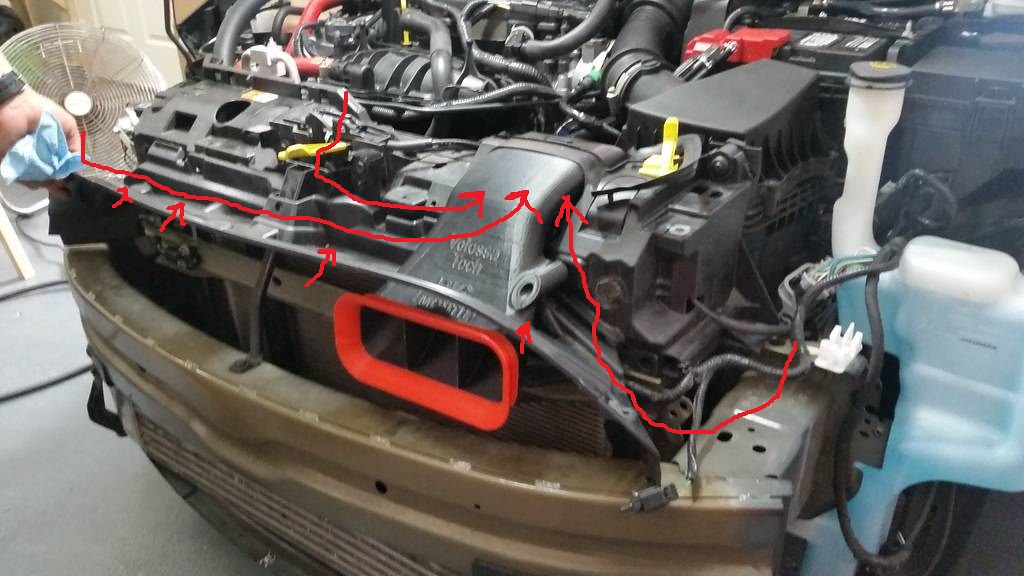Last night I pulled the four screws on the top panel where the air is brought into the airbox and tried to get a good look at exactly where the air would come from if everything is stock without a hole cut in the shroud. I tried to pull the panel off completely, but it is somehow attached to the front bumper and I wasn't willing to pull hard enough for fear of breaking it (that is a very typical outcome for me.) Anyway, I found that the area under the panel is pretty well sealed up and is fairly large, it runs a little over the length of the grill and is probably 3 inches deep and 4 inches wide on average across it. It looked like there were a few places that air could get in; mainly from each end under the headlights/above the crash bar where it just opens up completely, it could also get in from where the hood latch comes through, and the only other spot I saw was it looked like there was a small gap in places on the front edge that would allow air in from the near the grill. All of these locations were in front of the radiator, although the biggest holes on the ends under the headlights still opened up under the hood. Either way most of the air would come from fairly indirect locations, and most likely from hot air under the hood. I don't disagree that cutting a hole in the shroud would allow more fresh air, but without sealing off the other areas it is still getting some hot air in, mainly from the ends under the headlights. I would assume even with the ST200 airbox it is still getting air from here along with the fresh air hole in the bottom (unless you seal up the snorkel part).
This makes me think that if I want true fresh air without any chance of under hood engine air I would want something like the VelossaTech Big Mouth with a sealed stock box.
OR
I think the best "no cutting" method would be an ST200 airbox with the snorkel on the top of the airbox sealed up. Thoughts?
VelossaTech has a post in this thread with a couple images that kind of allow you to see how the cowl would vent. I sketched on one to show what I was thinking.
http://www.fiestastforum.com/forum/t...-thread!/page7

This makes me think that if I want true fresh air without any chance of under hood engine air I would want something like the VelossaTech Big Mouth with a sealed stock box.
OR
I think the best "no cutting" method would be an ST200 airbox with the snorkel on the top of the airbox sealed up. Thoughts?
VelossaTech has a post in this thread with a couple images that kind of allow you to see how the cowl would vent. I sketched on one to show what I was thinking.
http://www.fiestastforum.com/forum/t...-thread!/page7

